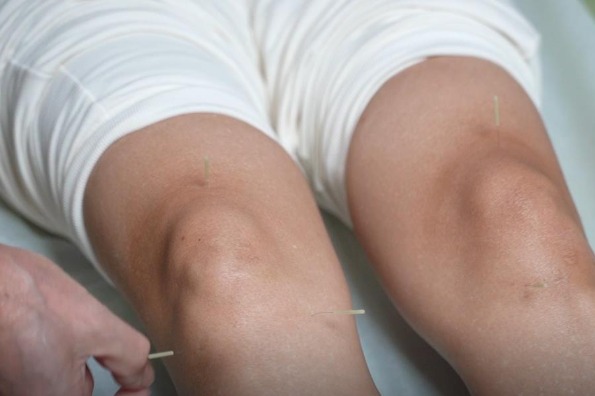TCM veterinarians help give pets new lease on life


A traditional Chinese medicine veterinarian carefully places a gray dog-a schnauzer-on a bed, disinfects fissures on three paws and begins an acupuncture procedure.
Niuniu, the dog, is 10 years old and has been hospitalized for 10 days for inflammation of the left hip, which causes pain and influences its walking.
"This is when traditional Chinese medicine can play a role," said Guo Yang, a vet at Shennong-Wellhope Animal Hospital, who is also a lecturer in animal husbandry and veterinary medicine at Shenyang Agricultural University.
Guo has been doing this for 15 years and has helped more than 200 dogs and cats troubled by nerve damage that brought pain, paralysis, inflammation and walking difficulties.
China has a TCM veterinary history of more than 1,000 years of treating horses, pigs, sheep and other animals, including dogs.
Demand has risen in recent years for TCM veterinarians committed to improving the health of pets-mainly cats and dogs-along with the nation's economic growth, according to Li Daibing, director of the pet diagnosis and treatment branch of the Chinese Veterinary Medical Association.
"In fact, it's much more difficult to treat pets than humans because our patients can't talk," Guo said.
Guo remembers the first time he used TCM to treat a pet dog years ago. A friend of his sought help because the hind legs of his dog were paralyzed and no other vet had been able to help.
"After 10 acupuncture treatments, it stood up again on the very evening when the heartbroken owner had planned to put it down. I still remember the dog running happily and the owner's big smile," said Guo.
The first and biggest challenge in treating pets is communication, he said.
"A TCM vet spends a lot of time in advance with the owners to learn everything possible about the pets, including things such as changes in its diet and excretion, and the condition of its eyes, ears, skin and hair," he said.
It involves observing, listening, questioning and feeling the pulse-the same four steps of diagnosis as for humans. The animal hospital also offers advanced tests, such as computerized tomography and magnetic resonance imaging, as well as blood tests.
"It is all about the health of the pets," Guo said. "TCM does not reject modern technology. We believe that by improving an animal's immunity, it can become stronger and heal by itself."
Because animals cannot speak and their symptoms vary, vets must be patient and draw from clinical experience to judge what is wrong, Guo said, while inserting acupuncture needles into Niuniu.
"Each pet is different. As you see, a schnauzer is sturdier than a poodle. Niuniu hardly barks during treatment and even seems to be enjoying the acupuncture."
It took Guo almost 10 minutes to place the needles in the dog. He then used a delicate electrical instrument to stimulate the corresponding nerves. Acupuncture can stimulate the release of natural analgesic substances to relieve pain.
Unlike Western-style vets, TCM vets do not use oral painkillers. The side effects of certain drugs can damage a dog's liver or kidneys.
Niuniu's owner, a man surnamed Han, said the animal's hind legs became paralyzed two months ago. But Niuniu can now move slowly after six weeks of treatment.
Experts say traffic accidents, aging and hereditary factors are the main causes of pet mobility problems.




